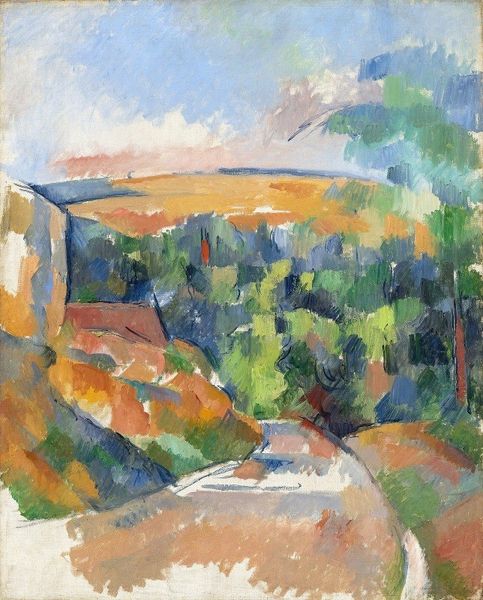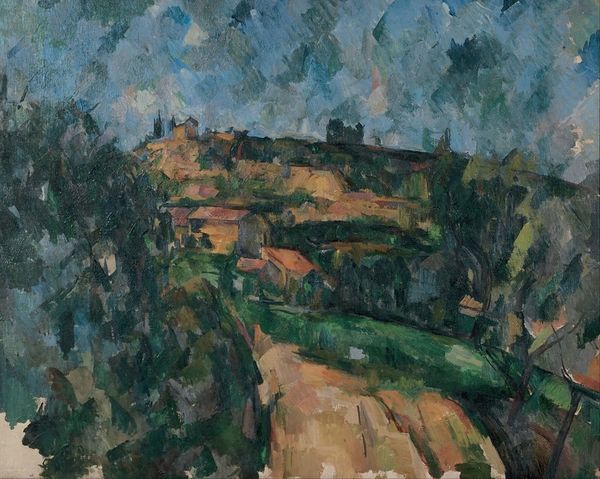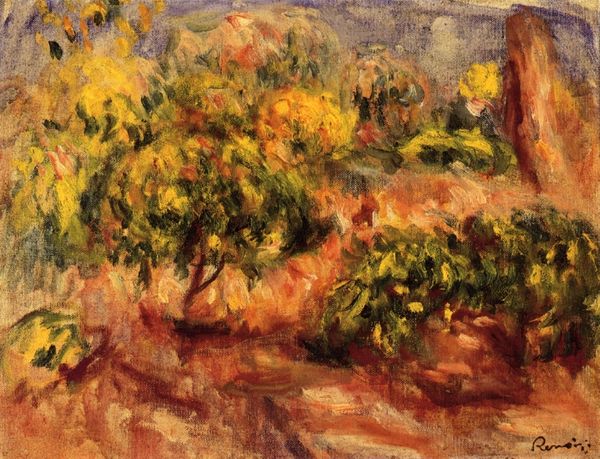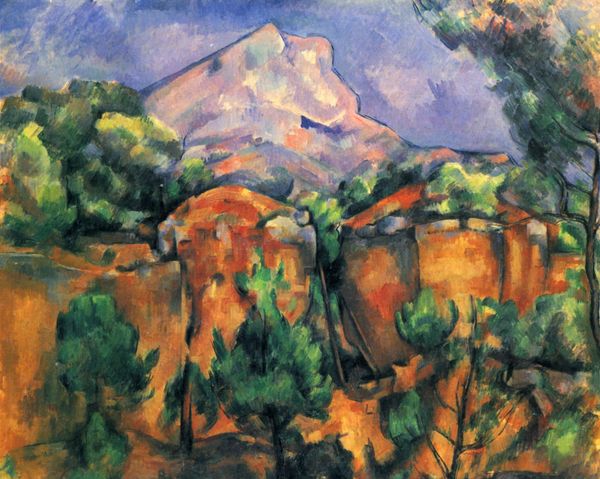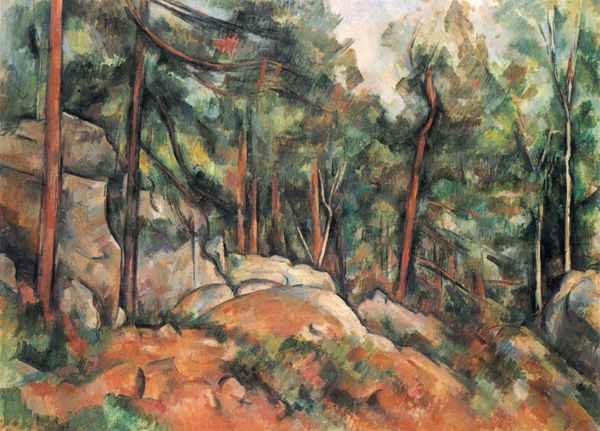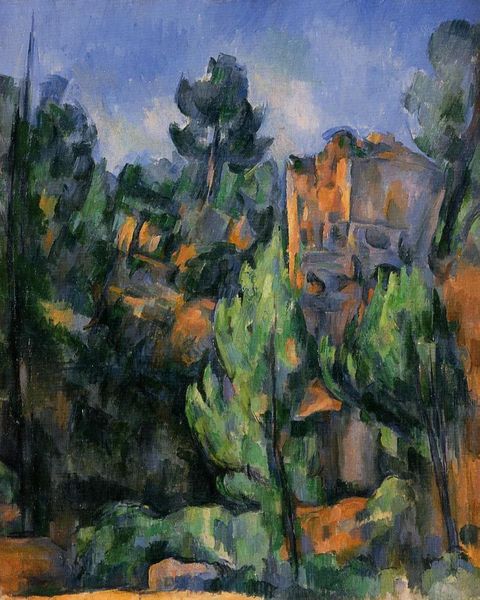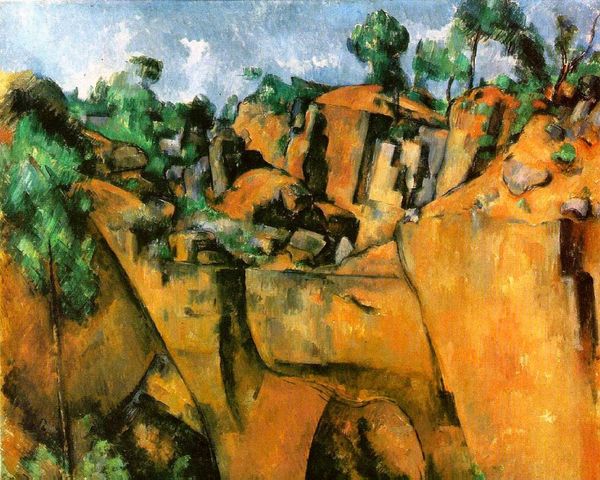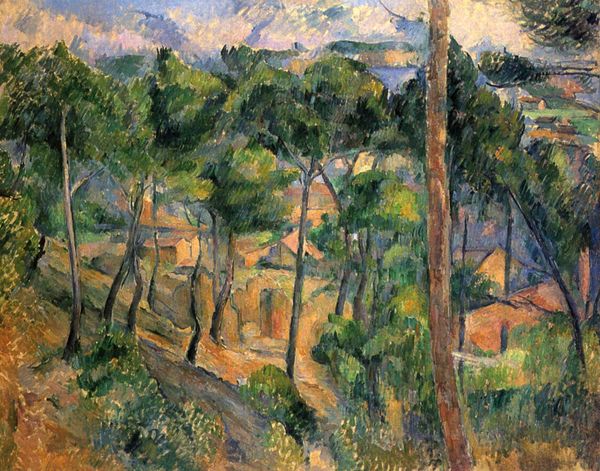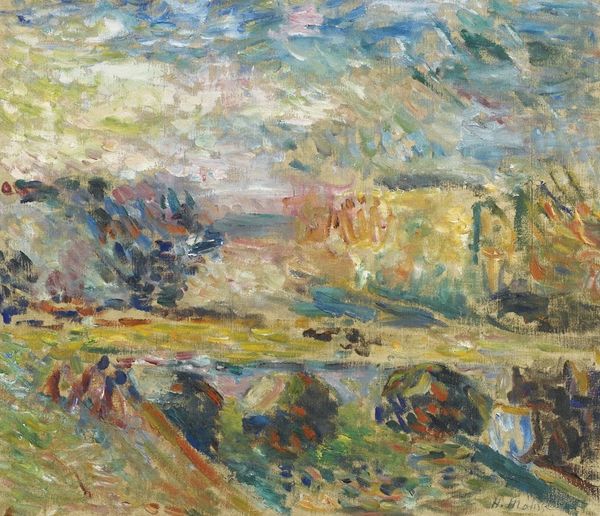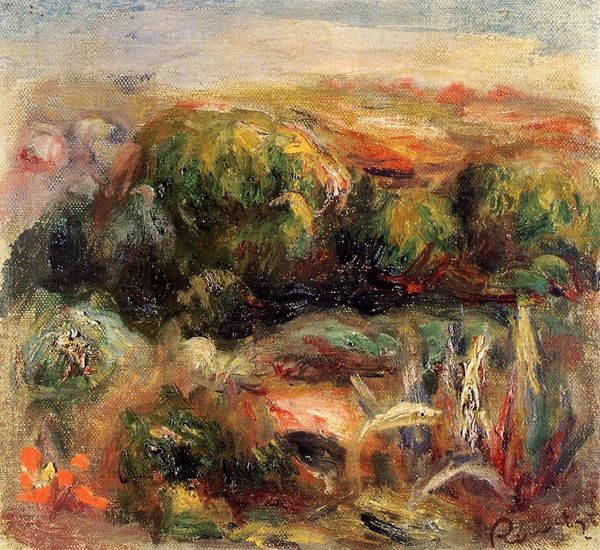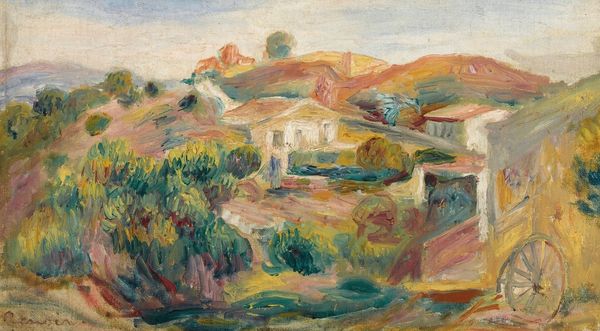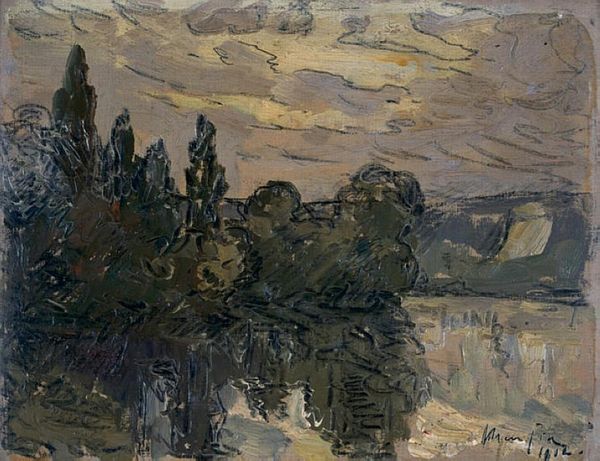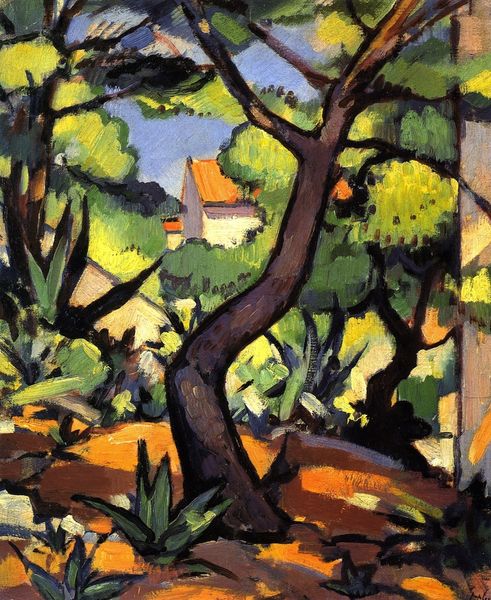
Copyright: Public domain
Curator: Cezanne's "Corner of Quarry," painted in 1902, arrests the eye. It's an oil painting, currently held at the Barnes Foundation. What are your initial thoughts? Editor: My first impression is one of structural density and simmering earth tones—a feeling of concealed energy within the landscape. Curator: Absolutely. Cezanne, within the post-impressionist movement, aimed to deconstruct the visible world, searching for fundamental forms beneath the surface. The quarry itself can be viewed through the lens of the exploited landscape, raising issues concerning industrial encroachment and ecological impact. Editor: That is there, yes, but these warm tones - oranges, yellows - they're the colours of raw, exposed earth. The quarry becomes almost like a wound, a disruption in the landscape but it reveals layers and symbols from deep time. Look at the geometric forms and how they are piled. They look like monuments or forgotten cultural images. Curator: Precisely. Furthermore, Cezanne's life, particularly the societal shifts, contributed to his need to move beyond established representational conventions. This idea that objective, “real” imagery often reflects existing social structures of power and needs deconstruction. Editor: I see how the visual vocabulary breaks with norms, offering emotional textures, which reveal the deeper essence. I’d push back a bit that we not read industrial decline exclusively, as if landscapes do not exist outside of modernity and trauma. The colours also speak of regenerative capacity and promise. Curator: That's a great counterpoint, one to consider when we assess how we ascribe meaning onto natural sites and how these landscapes interact with cultural and historic narratives. Editor: Thanks, together these multiple aspects encourage engagement that moves beyond facile projections about “nature." A conversation rooted in lived and embodied realities, just like Cezanne's vision. Curator: A reminder of how art helps us re-evaluate not only visual understanding, but to deepen intersectional engagement of ideas surrounding identity, culture and memory.
Comments
No comments
Be the first to comment and join the conversation on the ultimate creative platform.
